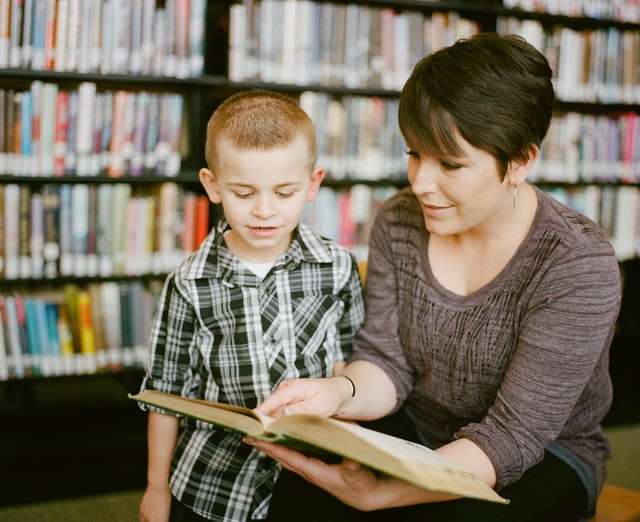Test season can be a very stressful and demoralizing time for students, especially those who are struggling to keep up with the content. Teachers can try everything from telling the student to keep their head up, take deep breaths or even just review to build confidence, but are there any strategies for building student confidence and get them out of that negative spiral that are backed by actual research?
According to a recent research study published in the Journal of Clinical Psychology, the objectively best way to improve the mood and confidence of an individual is through subjective means. Rather than showing that there is one perfect method that works for the brains of all people, the study found that individualizing the intervention worked significantly better for improving mood.
Surprisingly, the most effective way the intervention was individualized wasn’t based on anything like genetics, medical history, or brain chemistry, but instead was solely based on the subjective feelings of what the participants felt they were best at.
New Research on Building Confidence
The research study was conducted on over 600 participants at Ohio State University and was looking into the way therapists could frame various mood stabilizing strategies for their patients. The participants were first given a brief lecture on two approaches, one called “cognitive” and the other mindfulness.
The cognitive approach is a more active approach to mood stabilization where the participant was guided to use logic to reevaluate their situation and calm their emotions, whereas participants who were in the mindfulness group were taught to be aware of their feelings, but not try to change them and instead accept them.
After a brief practice session where the participants used both of the approaches, they were randomly told that one was their “strength” and the other their “weakness”. Then the participants were put through a “sad mood induction” where they were told to imagine one of their loved ones dying while listening to sad music. The participants were told to use one of the strategies, either the one that they had been told was their strength or the one that they were told was their weakness.
Though there were no significant differences between the two approaches in terms of mood recovery, the researchers found that regardless of which approach was used, the participants who were using the strategy that they were told was their strength recovered their mood more quickly. This is surprising as the participants were told completely at random which skill they were better at without any consideration of their actual ability to utilize the mood stabilization strategy.
Whether or not the participant actually had used the strategy well before, being told it was their “strength” actually made them better at using it. According to one of the researchers and head of the Ohio State University’s Depression Research Laboratory, “Our results suggest that whether participants were good at the skill was not relevant. It was the belief that they were good at that skill that made it effective”. (Murphy et al.)
Building Student Confidence in Class

This self fulfilling prophecy of competence can be a powerful factor for teachers to consider similar to how doctors must keep in mind the placebo effect. Similar to how the belief that a medication or procedure will have a certain effect on the body causes that outcome to be more likely, the brain also is subject to preparing and priming things it believes to be true.
It is currently unclear from research exactly how this mechanism works, but teachers can still utilize this understanding to frame their conversations better to help in building student confidence.
While it might not be best to outright lie to students about their capabilities, focusing on aspects that students are good at in a task might help them to focus on the positives and utilize their strengths rather than getting stuck on their flaws. If the student can focus on the parts they do well and actually complete the work, even if it is full of errors, at least they have completed the assignment, gotten some practice, and learned a bit more. Instead of the student getting overwhelmed or frustrated before they even start, with this approach, the student will get work done confidently and then can be gently shown the areas they need to improve.
For example, a student who is writing an essay might be told that they’re fantastic at expressing their opinions and that they will do a great job on the paper even if they struggle with grammar and punctuation. The statement that they are great at expressing their opinions in a clear manner should be true, even if that is generally done best orally, but then the student can focus on their strength of expression when writing rather than all of their spelling and grammar errors.
Once they have confidently put down their ideas, the teacher can give mindful feedback to support the grammar and spelling errors while praising the students’ clear ideas. This can help in building student confidence as well as get students started working on what they can do instead of hitting a wall before they even get going.
Another example could be a teacher praising a nervous student’s approaches to learning and study strategies even if they struggle on the actual tests. Focusing on how organized the students’ notes are or how good they are at memorizing things for other classes may help them gain confidence when studying even if they aren’t naturally suited for the content of the class.
Focusing on their good approaches to learning and how it leads to success in other areas can help them transfer their confidence and abilities to the subject at hand as well. Building student confidence can be difficult when they are often stubbornly defeatist, but with this research based approach to objectively improving mood and confidence, teachers can chip away at students’ negativity.
Teachers have long known that interventions often need to be individualized in order to be effective for their students who all have different backgrounds, different personalities and different propensities. Oftentimes, the ways teachers work to personalize learning is through Differentiated Instruction based on formal psychological evaluations by a psychologist.
Basing classroom strategies on interventions from the numerical data obtained from these types of reports may seem like the best evidence based practice, but this new evidence suggests that teachers need to focus less on the numbers and more on the personal feelings of their students. While oftentimes the numbers will simply be a reflection of the inner workings of their brains, this isn’t always the case.
When students are feeling depressed or overwhelmed by work, rather than trying to use logic to try to convince them that they’re doing alright and to just keep moving forward, teachers should just give students a short confidence boosting task. Every teacher who has tried to debate their students knows it can often be hopeless to try to talk students into or out of anything, but when the ideas come from the students themselves, the teacher doesn’t have to worry about getting past the immovable wall that is a teenager’s negative stubbornness.
So if students’ negativity about a task is too strong, a teacher could consider letting students do a short activity where they will get a small win and shot of dopamine before going back to the challenge at hand.

Even younger students who are feeling down from a failed test or a tough new unit can be given a short quiz or classroom activity from when they were doing well in order to help them remember times when they were more successful. Reminding students of their strengths helps them to focus on positive thoughts rather than getting lost in a cloud of negativity.
Afterwards, the teacher can help the students see how they weren’t always good at even their favorite tasks. Giving students a chance to have a small win before trying to start that conversation however will lead to students being more open minded to the teachers positive encouragement.
When a teacher sees that the class is having trouble with a new concept or is just in a bad mood, the teacher can give a brain break to give students time. Afterwards, the teacher can help them focus on their strengths when dealing with the tough new concept.
Helping students reframe their struggles and refocus on what they can control will not only help give them a short term confidence boost, but teach them how to cognitively reevaluate the problems they are facing, mindfully accept what they can’t change, and utilize their strengths to improve a little bit more each day.
Want more like this? Make Lab to Class a part of your weekly professional development schedule by subscribing to updates below.
References
Murphy, Samuel T., et al. “Framing an Intervention as Focused on One’s Strength: Does Framing Enhance Therapeutic Benefit?” Journal of Clinical Psychology, 2022, https://doi.org/10.1002/jclp.23302.



